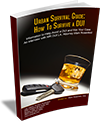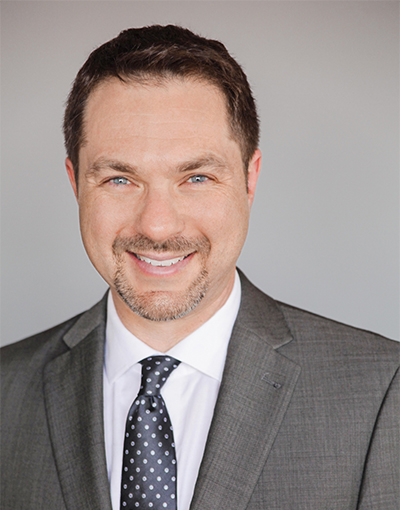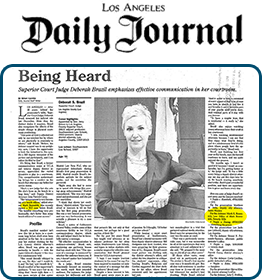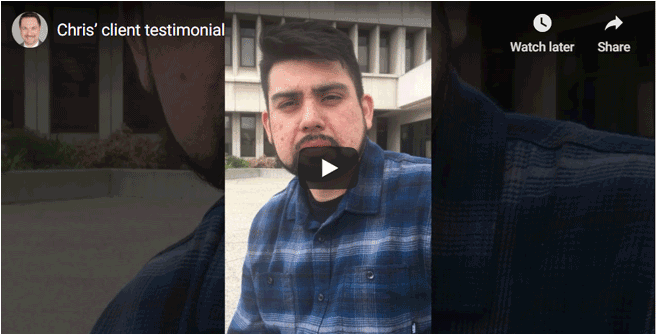Q: BY MR. ROSENFELD: What are you basing your opinion that that section of PCH has a high incidence of DUI?
A: From my experience working at that station and also from compiling the statistics, the traffic statistics at the station on a monthly basis.
Q: Is the incident of DUI on PCH in Malibu high compared to PCH in Santa Monica?
A: I don’t know that.
Q: Is the incidence of DUIs on PCH in Malibu, are those incidents higher or lower than by LAX?
A: I don’t know.
MR. DISTRICT ATTORNEY: Objection, relevance.
THE COURT: Sustained.
Q: BY MR. ROSENFELD: Have you participated in any studies regarding the number of DUI incidents on PCH in Malibu?
A: No.
Q: Are you familiar with the Uniform Traffic Control Device Regulations?
A: Slightly. Very slightly.
Q: Do you know whether those regulations were followed when setting up the checkpoint in this case?
A: I know that we follow guidelines that are set up by the Office of Traffic Safety, and we follow those guidelines.
Q: Do you have a copy of those guidelines?
A: No.
Q: Do you know what those guidelines say?
A: No.
MR. ROSENFELD: No further questions. Thank you.
THE COURT: Anything further?
MR. DISTRICT ATTORNEY: Very briefly.
REDIRECT EXAMINATION
BY MR. DISTRICT ATTORNEY:
Q: Sergeant Huelsen, was one of the turnoff spots available on Rambla Vista?
A: It may have been. That sounds likely; however, like I said, I don’t really feel comfortable giving you exact locations on that. I just don’t remember.
Q: And you said reflective signs were lit up from lighting from existing lamps in that area of PCH. Is that correct?
A: If I recall correctly, that’s correct. And there are large reflective signs lit up very well by headlights of vehicles.
Q: How long have you been doing traffic at Lost Hills?
A: I have been a traffic investigator for about four and a half years.
Q: And how many DUI investigations have you done in the area of PCH and Carbon Canyon?
A: Well over a hundred, I imagine.
Q: Thank you. Nothing further.
THE COURT: Anything further?
MR. ROSENFELD: Nothing further.
THE COURT: All right, you may step down, step outside please. Any additional witnesses?
MR. DISTRICT ATTORNEY: No further witnesses.
THE COURT: Any witnesses, defense?
MR. ROSENFELD: No witnesses, your Honor.
THE COURT: Argument.
MR. ROSENFELD: Defense’s position is the same: the People have not made substantial compliance with the Ingersoll factors, and I have provided the Court with sufficient information and evidence that deemed this checkpoint unlawful checkpoint. One of the key factors is the operational decisions on why and where the checkpoint is set up. We don’t have any information to justify that. We don’t have any directive on the criteria that was set up for stopping and starting the checkpoint. We have testimony that at some point the protocol was changed from stopping every car to not stopping every car.
THE COURT: When you say protocol has changed from stopping every car, there is no testimony that they stopped every car. When I clarified the question he indicated that it was a group of cars and other cars in between.
MR. ROSENFELD: Sure. And what the Court is looking for in Ingersoll is a formula to justify the stopping sequence, and that that formula not be deviated from by the line deputy. That the police officer in the street does not have control over what car is stopped; the decision is made by a supervisor. We do not have that information in this case. It is not acceptable for the deputy standing on PCH to decide which car to stop and when. There needs to be a neutral formula and it needs to be implemented in a rigid fashion, either every car is stopped, every fifth car, every tenth car, every car is stopped until the checkpoint is full, and we don’t have that. What we have is that not every car was stopped, which gives the line deputy discretion to stop at their free will whatever car they want or whatever car pulls in front of them, and that is not an acceptable method or formula for justifying a stop. We have insufficient information to justify the location of this particular checkpoint. Simply to say that there is a high incident of DUIs on PCH in Malibu is insufficient to justify this location; that mere allegation or statement must be backed up with some concrete evidence. If there is an investigation that was conducted by Sergeant Brooks I believe, document how many or what type of incidents there were related to alcohol; that needed to be brought before the court to justify this; otherwise it is just hearsay and there is insufficient justification for this particular location. It may be that no location in Malibu is appropriate for a checkpoint. Having ten DUIs on PCH may be a high number, it may be a low number, we just don’t know. The People have failed to establish that this checkpoint was set up in a safe location to protect the officers and protect citizens. There is no explanation as to how the lanes were narrowed down, if they were narrowed down. There was testimony that the checkpoint was set up around a curve, around a bin, and very dangerous to put a checkpoint around a winding corner if that is in fact what happened. There needs to be a secondary screening area. That screening area needs to be off to the side in a safe location. No testimony about that – .
THE COURT: There was testimony that the defendant was taken off into a secondary area for that screening.
MR. ROSENFELD: That’s correct, but no explanation as if that was the No. 2 lane, if that was the shoulder, if that was a parking lot, if that was blocked off by sheriff vehicles or concrete dividers, nothing to tell the Court that this location is in fact safe for the officers and for the citizens. We have testimony that the officers were supposed to ask about driver license and whether or not the person had anything to drink, and that was the neutral criteria to be used. But just with the two officers that we have here, two deputies, we have a disparity, that one officer is saying the protocol, the procedure, what was supposed to be asked, whether they had anything to drink and to show a license, but other officers were asking for registration, proof of insurance, checking the cars for any contraband.
THE COURT: That wasn’t established when those questions were asked, whether those questions were asked in the area that they were pulled over to or the initial questions.
MR. ROSENFELD: Well -.
THE COURT: Based on the testimony I heard. There is no testimony indicating that either of these officers asked for registration or that at the time of the stop. The other testimony is on record.
MR. ROSENFELD: Your Honor, I would have to go back and check the record because my recollection is that the Deputy Mosquera testified that he asked when someone pulled up for driver license, registration and proof of insurance, so that would be before any secondary screening. Asking for additional information, checking the car for contraband is moving into general crime control, which is not an acceptable use of a checkpoint. If a checkpoint does fall under the Ingersoll factors, it needs to be to drinking and driving and not going into general crime control. The People have failed to establish with sufficient evidence that the checkpoint displayed the indicia of an official checkpoint.
Simply placing a couple of signs on the right shoulder of PCH is insufficient to justify a lawful checkpoint. We have a center divider and we have lots of locations to place signs. Placing un-illuminated, simply reflective signs saying that something, and I don’t believe we have evidence into what was actually said on the signs, just placing a couple of reflective signs on the side of the road some distance before the checkpoint is insufficient to establish the initial step of reliable governmental intrusion around the corner. There should have been electronic signs with arrows saying warning, DUI checkpoint ahead, narrowing the road. We would expect several signs, the lighted signs with the little generator on them. None of that. We don’t have it in evidence. So we don’t satisfy the Ingersoll is factor of having it be an official nature.
The detention, the scope and degradation of the detention varies from officer to officer with the questions that they asked and there is no testimony to establish what training the line deputies received as far as what the detention should entail, and there is no affirmative evidence before the Court to establish that this particular case was in fact publicized. The fact that the Sheriffs Department has an office that has contacts and disseminates information is nice, but it is not evidence for the Court to consider in this particular case. I do not believe that the People have established with sufficient reliability and competent evidence before this court that the Ingersoll factors have been met. Even in accordance with the Sitz case where one factor such as advertising does not carry a day. In total, the People have not met their burden. Thank you.
THE COURT: It is noon. I want a copy of that case delivered here by 1:00 o’clock to the clerk’s desk.
MR. DISTRICT ATTORNEY: People would also bring to the Court’s attention another case which we will provide a copy, People versus Banks which is a California Supreme Court case in which the Supreme Court explicitly held that the advanced publicity guidelines in Ingersoll was not a pre-requisite for a checkpoint.
THE COURT: Whatever cases you want me to read present it to the clerk, and then we will reconvene this for your argument at 1:30, because it is two minutes to 12:00.
MR. ROSENFELD: Thank you, your Honor.
THE COURT: Thank you. (Noon recess)
THE COURT: On the record on Juan Client. Counsel, your appearance please.
MR. ROSENFELD: Mark Rosenfeld appearing 977.
MR. DISTRICT ATTORNEY: Emmet District Attorney, Deputy District Attorney for the People.
THE COURT: I recessed this after Mr. Rosenfeld’s argument because it was two minutes to 12:00, and I asked People for copies of cases, they had dropped off several cases. First case they dropped off is People versus John David Williams, Supreme Court California case, Cal. 4th,9.
MR. DISTRICT ATTORNEY: Your Honor, I provided copies of all the cases to defense counsel.
THE COURT: All right. In addition to that he dropped off a copy of People versus Mary Louis Banks, Supreme Court of California case, 6 Cal. 4th, 9. Ingersoll versus Palmer, United States Supreme Court case, 43 — I am sorry, Ingersoll is a Supreme Court of California opinion, 43 Cal. 3rd, And Michigan Department of State Police versus Sitz, S-i-t-z, 496 U.S. 444. Those are the cases that counsel presented. And you have received a copy of those?
MR. ROSENFELD: Yes, I have, your Honor.
THE COURT: Counsel, anything else you want to add at this time before I let Mr. District Attorney proceed?
MR. ROSENFELD: Nothing further at this time unless the Court has any inquiries.
THE COURT: No, not at this point.
MR. DISTRICT ATTORNEY: Your Honor, I will start the argument just with reference to the motion to suppress in this case, made reference to the four-page document, and it has subsection versus theory of Fourth Amendment violation, and it is actually requirements of Penal Code Section 38.5 that the defense is moving to suppress evidence, that it specifies, defense needs to specify what the basis is for it. Granted in many situations all that needs to be alleged is that there was the absence of a warrant and that is sufficient; however, refer the Court to People versus Williams where the California Supreme Court analyzed the necessity of having a specific argument in a 38.5 so as to put the People on notice as to what witnesses to subpoena for a hearing. And it says, “Defendants simply assert the absence of a warrant and make a prima facie showing to support that assertion.” That is the absolute minimum. “Of course, if defendants have a specific argument, other than the lack of a warrant as to why a warrantless search or seizure was unreasonable, they must specify their argument as part of their motion to suppress and give the prosecution an opportunity to offer evidence on the point.”I am referring to Page 0 of Cal. 4th,9, and the Court refers as an illustrative example to People versus Britton, 6 Cal. App. 3d, 689, 84, where the defendants were alleging that the police had failed to comply with the knock and notice requirement, and when they failed to allege that that was the specific basis for the motion to suppress, that failure constituted lack of specificity. And I believe that the Ingersoll specific criteria for field sobriety checkpoints is actually perfectly equivalent to the knock notice requirement given that it is a requirement that has been created by case law. People were not on notice that this was going to be the basis for the defense’s motion. In fact I called the office and then I spoke to the attorney who has represented the defendant on his previous appearances in this court and asked.






 Personal Attention
Personal Attention Every criminal case is unique and no attorney can guarantee the outcome of a case. The information on this site is legal advertising and for general information only. Using this site, requesting books, information, consultations or communicating with Attorney Rosenfeld through its site does not form an attorney/client relationship.
Every criminal case is unique and no attorney can guarantee the outcome of a case. The information on this site is legal advertising and for general information only. Using this site, requesting books, information, consultations or communicating with Attorney Rosenfeld through its site does not form an attorney/client relationship.








